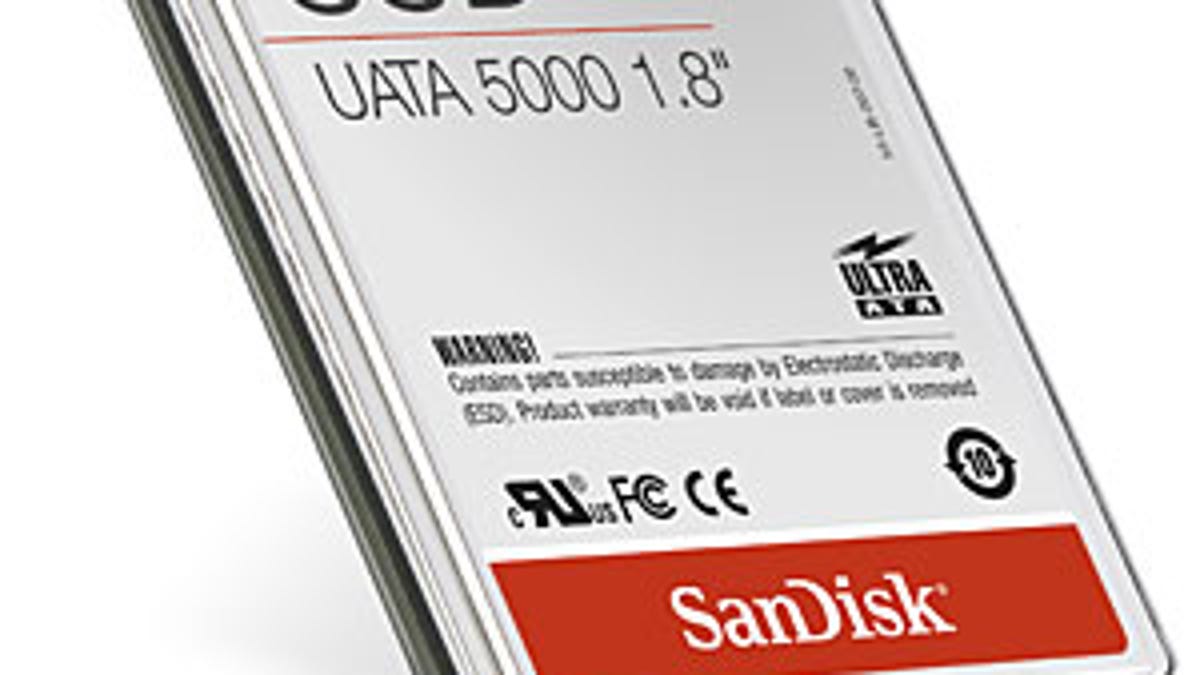Solid state, solid price
SanDisk's new Solid State Drive, upping the capacity to a reasonable 32GB.

Futurist types have been talking about SSD drives for years--solid state hard drives with no spinning platters or other moving parts to slow you down on the road to rapid computing. It's not totally crazy--after all, that's pretty much how your iPod Nano works--but for desktop and laptop computers, the high price and low capacity of these little drives have kept them from being more than an amusing proof-of-concept.
SanDisk has got a new Solid State Disk for all the naysayers out there, upping the capacity to a reasonable 32GB (still small for a hard drive, but not unusable), and packing it into a standard 1.8-inch laptop hard drive form factor. The SanDisk SSD Ultra ATA 5000 isn't the first SSD drive to hit this size, but at around $600 (when it's released later this year), it's about half as expensive as other versions.
Why would you want one of these things when standard hard drives of 100GB or more are cheaper and easier to find? Sure, there are the fast access times and there's the low power consumption, but we liked SanDisk's claim that a laptop with one of these drives can boot Windows Vista in as little as 35 seconds.

